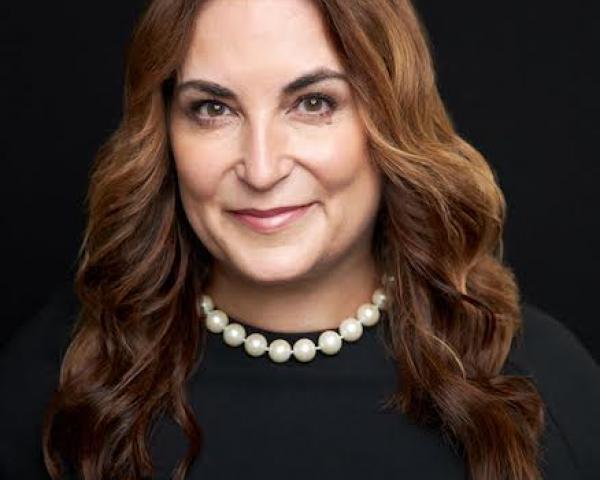The workplace is evolving, to the point that many people have no actual "place" from which to work. Some do their jobs remotely, while others work from locations such as their cars, if they are part of the gig economy.
While we often think about technology and automation as driving influences for the future of work, people are a critical part of the equation. The workers’ compensation industry will be an exciting place to be, as long as we can meet the challenges of attracting and retaining top talent and responding to evolving work cultures.
An esteemed panel of workers’ compensation thought leaders were on hand to help us address these issues during our most recent Out Front Ideas with Kimberly and Mark webinar:
- Lisa Corless, president and CEO of Accident Fund Group
- Artemis Emslie, founder, AGM Holdings, former CEO, myMtrixx
- Faith Mason, corporate manager, workers’ compensation, at Comcast NBC Universal
- Marijo Storment, CEO of Paradigm Complex Care Solutions
Talent Attraction and Retention
The workers’ compensation industry is facing high turnover as aging baby boomers set their sights on retirement. Finding people to replace them can be a challenge, especially in our industry, which younger people may view as behind the times.
Savvier companies are overcoming this challenge by focusing on technology — not to replace people but to attract those who have spent their lives using it. The "human touch" will always be needed in workers’ compensation to meet the needs of customers, especially cognitive skills. But many repetitive tasks can now be performed through automation, artificial intelligence (AI) and robotics. Successful integration of these newer technologies into our workflows depends on a strong human partnership.
Accident Fund Group has addressed the issue by making "People First" one of its strategic pillars. The company strongly promotes a work/life balance and uses this to reach out to younger talent.
The company works with colleges and high schools in communities throughout the country to let these students know about the many opportunities. For example, the company shares the ways it uses robots and AI. It has also conducted hackathons around Alexa and other digital assistants. These innovations attract these younger people to our industry, where they later learn of the many areas in which they can work.
Reaching out to students is also a good way to attract more nurses, who have become increasingly important in managing workers’ compensation claims but who are in high demand throughout the economy. One speaker said that there will be more jobs for registered nurses as of 2022 than any other profession in the U.S.
Many nursing school graduates are not even aware of the opportunities in workers’ compensation. Companies are working with colleges to add courses on case management.
Retaining nurses is also vital. The job of a case manager has become more difficult over the years due to the increased severity of claims, privacy and security measures, and the wide variety of service-level agreements.
See also: Workers’ Comp Issues to Watch in 2019
Paradigm strives to provide a fun, supportive working environment. Making its workers feel valued through mentoring programs and high-performing support groups is key. The company actually has found that, by treating employees well, they become a primary source of referrals for new workers.
A high value on soft skills has changed the way many companies seek talent. Rather than looking for people who have experience in the industry, companies may seek those who are empathetic and highly communicative. As one speaker told us, you can train an adjuster to be proficient in adjudicating a claim, but it is harder to teach soft skills.
Training and Development
Bringing new hires into an organization with the intent of retaining them for many years involves much more than just training them on certain tasks. It includes integrating them into the culture of the organization so that they truly feel engaged in it.
Some refer to this idea as organizational health, meaning the connection and communication felt among workers and their colleagues. Ideally, employees should have their personal and professional goals aligned with the corporate strategy to allow both the employee and the organization to grow and evolve.
The process of truly engaging workers begins the first day of employment. Employees need to understand the purpose of the organization and how their contributions fit into the big picture. They need to understand, not only what the expectations of them are, but what they can expect from the organization. That attitude fosters transparency and communication – two very important aspects of a thriving company.
One way to develop future leaders is by allowing employees to grow and expand professionally and personally. Sedgwick, for example, has a program where employees can nominate themselves into a leadership program.
Those accepted spend one year training in many parts of the organization. They work with mentors and sponsors and receive career coaching. They are exposed to many areas and products so that they are not pegged as specialists focused on only a single area. Part of the training helps them further develop those important soft skills. At the end of the year, they work on some of the company’s largest, complex programs.
Workers who deal with customers throughout the day do very well with resilience training. No matter how intrinsically strong someone is, getting yelled at for eight hours a day can take a toll. Companies that want to help their customer service professionals stay with the organization spend resources helping them to better deal with negative experiences.
Employee Experience and Engagement
Making employees feel supported and engaged with the organization not only helps retain them, it also is important if they become injured. Injured workers who are fully engaged in their recovery and the return-to-work process experience better outcomes and reduced costs for their employers/payers.
Using an advocacy-based care model keeps that employee connected and on the right track for a swift recovery. Comcast NBC Universal, for example, has a program that ensures injured workers are supported from the beginning all the way through the recovery – even if their workers’ compensation claim is denied.
The company provides resources to assess the worker’s condition and, if it is a mental-mental claim, for example, determines if it is compensable. If it is not, the company sends the employee to short-term disability and provides notice to the vendor to make the process seamless. The idea is for the employee to feel cared for and not experience a major disruption. Comcast NBC Universal calls the approach the "happy path."
Making remote workers feel engaged and connected can be a challenge. Paradigm seeks ways to establish constant connections among employees. Through mentoring, highly engaged small groups, an internal newsletter and other programs, the company finds ways to bring workers into the company fold, even if they are not physically together. There is even a software platform where workers can give one another accolades and celebrate birthdays.
One aspect of helping employees feel engaged is to ensure they feel safe; that is, safe to make suggestions and provide input that may not be exactly what the "suits" want to hear. Our speakers told us that allowing and encouraging honest feedback helps both the worker and the organization as a whole. Employees can draw attention to processes and tools that may not be working as well as they could. That allows change and evolution to occur.
Artemis Emslie related a program that allowed the organization as a whole to set goals and have individuals and teams come up with strategies to affect the goals. Workers, she said, often come up with ideas of one or two things to do differently that will help the company realize its goals.
See also: Culture Side of Digital Transformation
Culture
We often hear about the culture of an organization. Our speakers described it as something you can feel when you walk into a company. An open, positive culture is one where people are engaged with one another, obviously happy to be there and focused on the customer.. The general feeling is one of an accepting environment.
One way to ensure a company’s culture continues to be positive is by focusing on diversity and inclusion. More than an initiative, they are a mindset, a way of thinking and behaving. Studies have repeatedly shown that this mindset results in growth and innovation.
While both diversity and inclusion are necessary to improve a company’s culture, they are not the same. Diversity refers to the differences in people – not only gender and race but sexual orientation, a disability, ADHD, diversity of thought – anything that makes one person different from another.
The term ”inclusion” refers to creating a safe environment where every person feels honored and appreciated. Some companies foster inclusion by inviting diverse groups of people to meetings, such as high-ranking personnel along with lower-level employees. Each person’s opinions are encouraged and supported. If everyone in a meeting likes a particular idea, the lone person who does not should feel safe to express his or her thoughts without fear.
The idea of work/life balance is one aspect of culture that sometimes causes confusion. As Emslie explained, it does not necessarily mean every single day has the exact balance of work and personal activities. Instead, it can be viewed holistically. Ultimately, it means having priorities straight and taking care of both adequately.
For more information on this important subject, you can view information from a recent Future of Work event produced by the Alliance of Women in Workers’ Compensation, held adjacent to the 2019 Workers’ Compensation Research Institute’s Annual Conference in Phoenix. Information about the Alliance and notices of its coming events can be found here.








